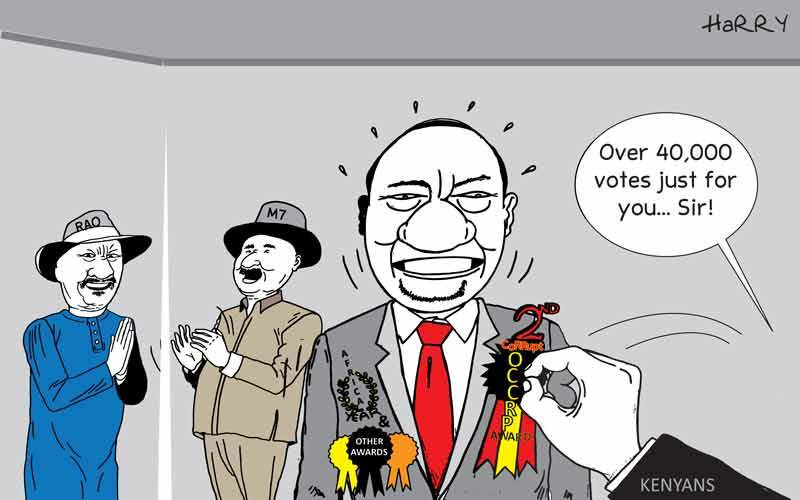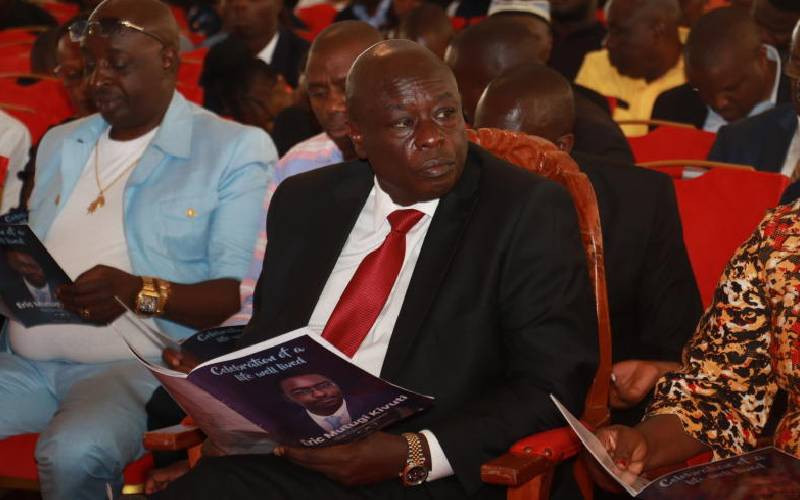By Mugambi Nandi
KENYA: The controversy surrounding the cost of the standard gauge railway line has not distracted us from an issue that has been on our mind for a while now: Kenyans who desecrate our national symbols.
In a show of what we consider misguided and pretentious nationalism, and possibly encouraged by the Brand Kenya initiative, some people have taken to shredding the flag and making all manner of outfits with it. They make dresses, pantaloons, shirts, skirts and blouses. It is not uncommon to observe, among this group, a section that makes the shield on the flag the centrepiece of their garment.
The said Kenyans design their outfits so that the centrepiece is on the seat, or as polite society would say, the backside. They sit on it. It is not inconceivable that they probably pass gas on it. What effrontery! As far as insulting the flag goes, that takes the clay medal. The other matter that sends goose pimples down our spine is hearing the various renditions of the national anthem, apparently intended to modernise it and “jazz” it up.
We stand on that conservative side that says that we ought to recognise the national anthem on the first note! A little bit of vexillology (the study of flags, which has nothing to do with the fact that we are vexed) might be useful here. So important are the symbols of our nationhood (the flag, national anthem, the Coat of Arms and the public seal) that they are protected by the Constitution and the law.
Throughout the ages, flags have been used as symbols of nationhood, among other dignified use. Wars have been fought to defend the honour and dignity of flags. In the famous 1914 Tampico Incident, the United States of America almost went to war with Mexico when Mexico refused to salute the US flag as part of an apology for a transgression at sea.
The incident led to the overthrow of Mexico’s General Victoriano Huerta, and eventually to the USA going to war with Germany in 1917.
Under the law, any person who shows any form of disrespect to or with reference to any of the national symbols is guilty of an offence.
We were therefore mortally dismayed when a cabinet minister got away with calling the flag “a piece of cloth” whose only use to her was in weaving through traffic. In another country and another age, those words would have been treasonable. They would have been the cause of an assisted but extremely reluctant early rendezvous with St Peter. When we were growing up, the flag was held with such reverence that when it was being hoisted or lowered we would stand at attention even if we were just walking past, minding our own business. (We have since progressed to other means of locomotion, but we hope that this patriotic ritual of reverence is still practised by pedestrians.)
The law prohibits the manufacture or importation of articles bearing any of the national emblems, in order to preserve their dignity. The other side of the coin is the question of how better to demonstrate the love of one’s country than to display the flag wantonly.
Perhaps there is merit in that question. We are certain that is not what inspired the clamour by Governors to be allowed to fly the flag on their cars.
* * *
We were thoroughly amused the other day when we heard a recording of the great man, Nelson Mandela, explaining how he discovered the meaning of the saying that “clothes maketh the man”. He said that when he and his compatriots were arrested, they were ordered to strip naked. His compatriots included some clerics, professors, lawyers and ordinary citizens. In his words, when he looked around he realised that clothes indeed maketh the man.
 The Standard Group Plc is a
multi-media organization with investments in media platforms spanning newspaper
print operations, television, radio broadcasting, digital and online services. The
Standard Group is recognized as a leading multi-media house in Kenya with a key
influence in matters of national and international interest.
The Standard Group Plc is a
multi-media organization with investments in media platforms spanning newspaper
print operations, television, radio broadcasting, digital and online services. The
Standard Group is recognized as a leading multi-media house in Kenya with a key
influence in matters of national and international interest.
 The Standard Group Plc is a
multi-media organization with investments in media platforms spanning newspaper
print operations, television, radio broadcasting, digital and online services. The
Standard Group is recognized as a leading multi-media house in Kenya with a key
influence in matters of national and international interest.
The Standard Group Plc is a
multi-media organization with investments in media platforms spanning newspaper
print operations, television, radio broadcasting, digital and online services. The
Standard Group is recognized as a leading multi-media house in Kenya with a key
influence in matters of national and international interest.





